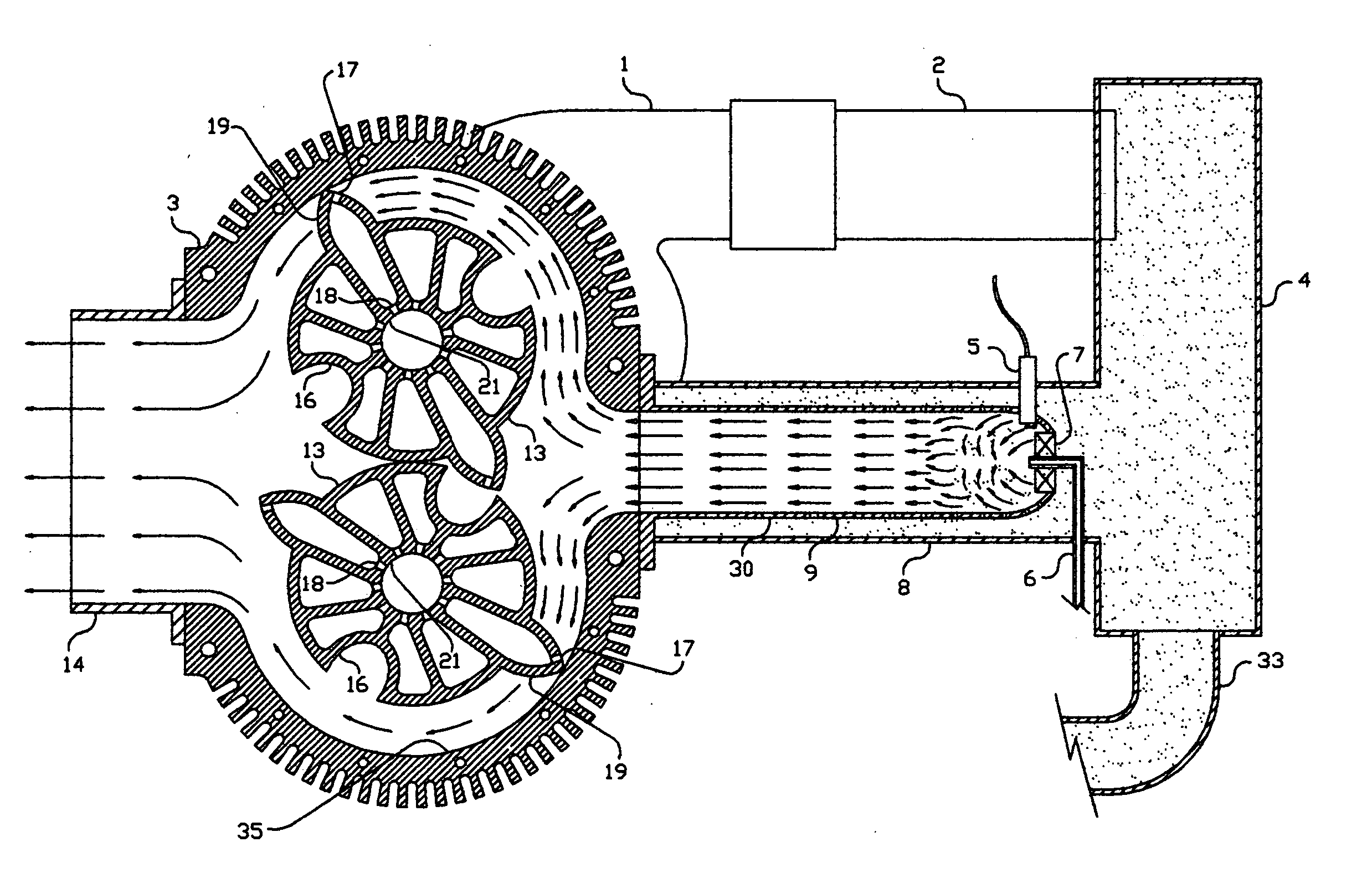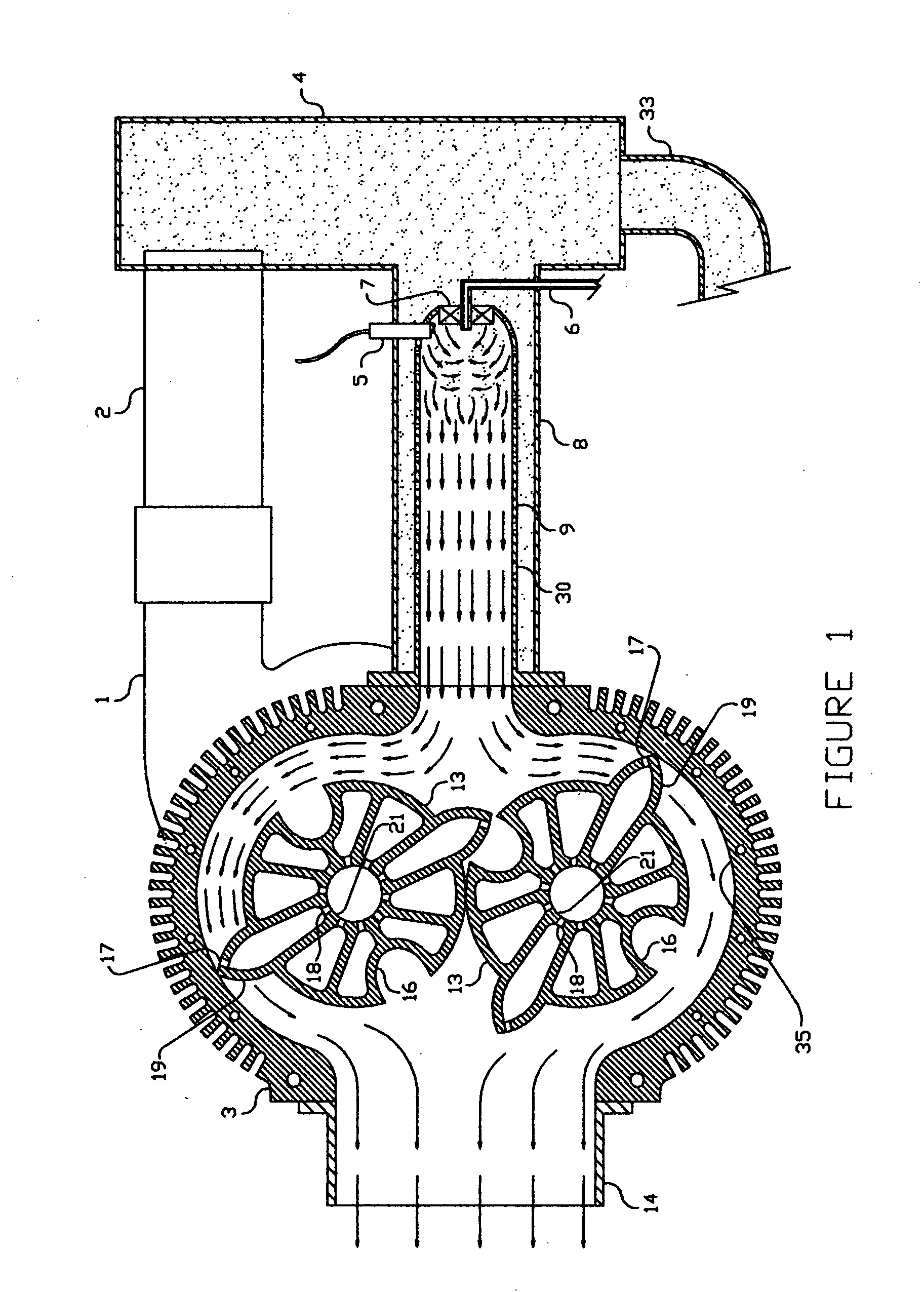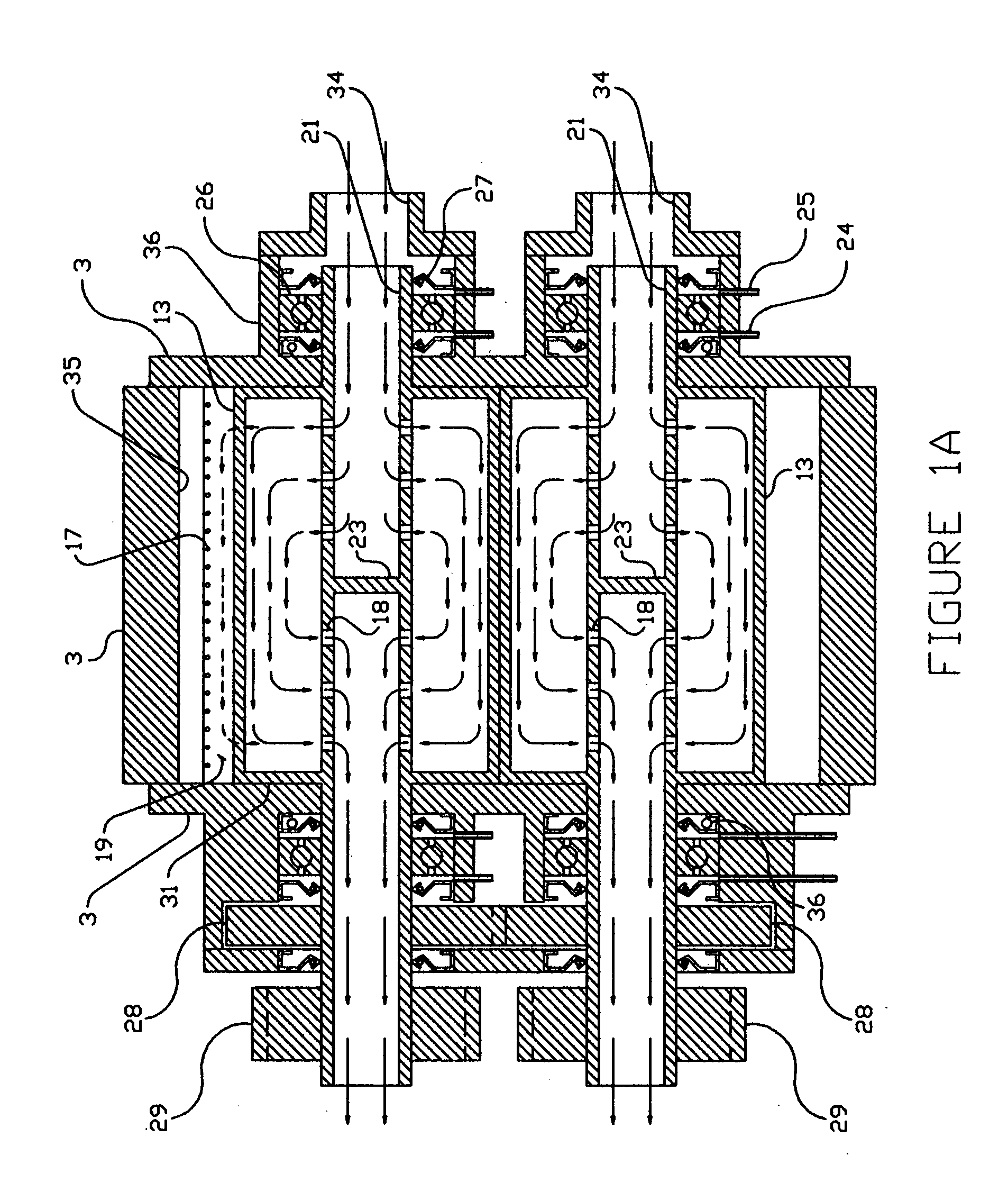Open-cycle internal combustion engine
a technology of internal combustion engine and open-cycle, which is applied in the direction of liquid fuel engine, machines/engines, mechanical equipment, etc., can solve the problems of high rotational inertia, high cost of turbo-shaft engine construction, and inability to change the speed of rotation very quickly, so as to improve fuel efficiency, reduce emissions, and reduce operating costs
- Summary
- Abstract
- Description
- Claims
- Application Information
AI Technical Summary
Benefits of technology
Problems solved by technology
Method used
Image
Examples
Embodiment Construction
[0027]FIGS. 1 and 1A show cross-sections of the preferred embodiment of an open cycle internal combustion engine of the present invention. The FIG. 1 section is taken on a line through the mid-point of the rotors 13, combustion chamber liner 9, and plenum 4. The rotor shaft plugs 23, shown in FIG. 1A, are not depicted in this view. The FIG. 1A section is taken on a line taken longitudinally through the centers of the hollow rotor shafts.
[0028] In operation;
[0029] A centrifugal compressor 1, driven by a drive gear 29 on one of the rotor shafts 21, forces compressed air through a compressed air duct 2 and into a plenum 4. The plenum 4 transfers the compressed air to a burner shroud 8, which conducts the compressed air to a swirler 7, and a burner liner 9. Fuel is introduced into the combustion area by a fuel-metering nozzle 6, which is fed by a fuel-metering pump, which is of conventional design and not shown. The swirler creates turbulence to mix the compressed air homogeneously wi...
PUM
 Login to View More
Login to View More Abstract
Description
Claims
Application Information
 Login to View More
Login to View More - R&D
- Intellectual Property
- Life Sciences
- Materials
- Tech Scout
- Unparalleled Data Quality
- Higher Quality Content
- 60% Fewer Hallucinations
Browse by: Latest US Patents, China's latest patents, Technical Efficacy Thesaurus, Application Domain, Technology Topic, Popular Technical Reports.
© 2025 PatSnap. All rights reserved.Legal|Privacy policy|Modern Slavery Act Transparency Statement|Sitemap|About US| Contact US: help@patsnap.com



